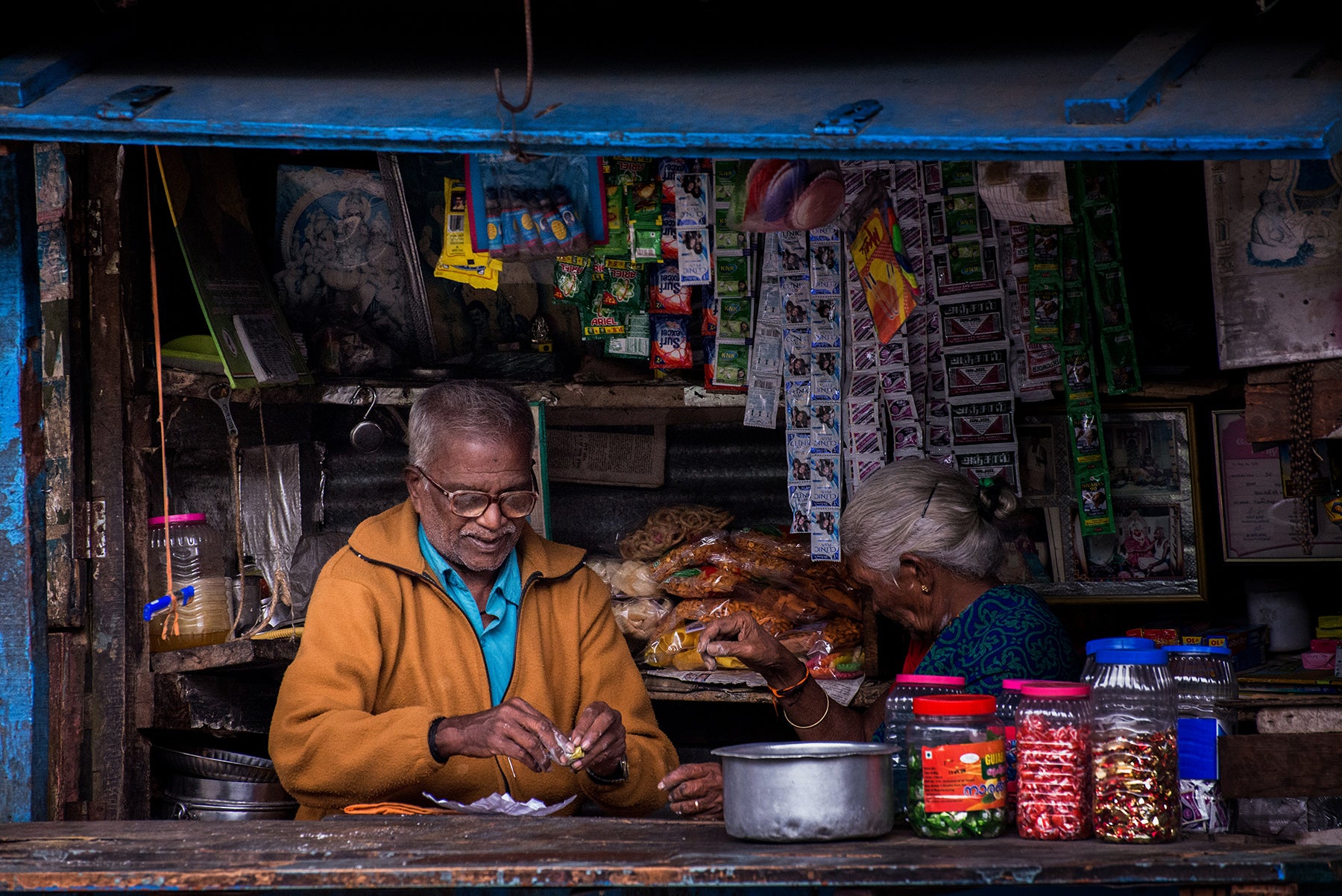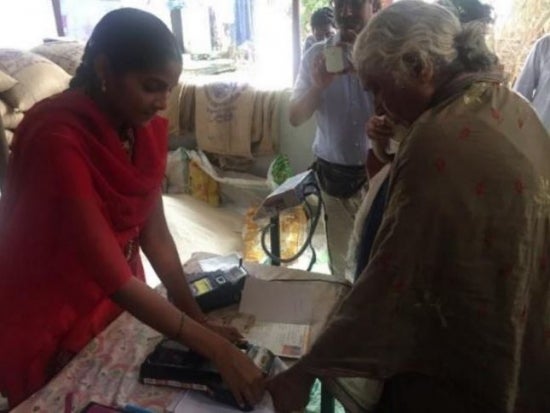|
The Indian authorities (the government and the Reserve Bank of India [RBI]) have been active proponents for digital payments. Leveraging the national digital ID system Aadhaar as well as growing smartphone ownership and connectivity, the government has made financial inclusion a top priority and is actively promoting digital payments to improve use of the formal financial system. As a result, 80 percent of the population now has a bank account, up from 53 percent in 2017.

In 2016, NPCI launched the United Payments Interface (UPI). UPI is a standardized messaging layer that allows instant, around-the-clock payments between any bank and many nonbank accounts. UPI provides interoperability across channels and devices, but adoption has been accelerated by Bharat Interface for Money (BHIM), a smartphone application developed by NPCI for any bank to use. Together with the demonetization in 2016,1 UPI has driven a steady increase in digital payments. For example, the number point of sale (POS) machines installed at merchant outlets nearly doubled in the three months after demonetization. In the two short years since its launch, payments made through UPI have already surpassed those made via cards (debit and credit) for a total of $19 billion as of January 2019. Given the rapid growth, the American tech juggernauts Google and Facebook are now jostling for dominance in the market, which is predicted to reach $1 trillion by 2023.
Despite these efforts and the growth that is underway, active use is still low. Almost 20 percent of bank accounts have been unused for two years, and only 54 percent of registered users have conducted a cash in/out transaction in the past 90 days.
Merchant Payments in India: Key Features
The expansion in access achieved in India holds important lessons for other markets. An essential element of the success of the country’s digital payments space is interoperability. By delivering interoperability across bank and nonbank providers, UPI enables real-time person-to-person (P2P) transfers, bill payments, and merchant payments for everyone in the formal financial system. NPCI has taken this interoperability further by launching Bharat QR, a market-wide quick response standard. Standardized QR prevents fragmentation in the market, as discussed in greater depth in “Interoperability: Why and How Merchant Payments Providers Should Pursue It,” can make achieving critical mass for digital payments substantially more difficult.
Interoperability resolves some barriers to uptake, and the UPI interface goes further in reducing customer friction by removing the need to enter bank details. Users need only to enter the recipient’s cell phone number or username (Virtual Payment Address) to make a transfer. A username is far easier for customers to remember, it is less prone to typos, and it is less risky to share than the long account numbers that are required for bank transfers in most countries. Using cell phone numbers instead of bank account numbers has supported the growth of digital payments in Tanzania as described in the slide deck “Voda Tanzania USSD Interface.”

NPCI is also reducing friction by lowering the hardware requirements for participating in the system. The Aadhaar Enabled Payment System (AePs) allows people without smartphones or cards to withdraw and transfer funds at microATMs using biometric authentication (primarily among social cash transfer recipients).
Finally, the Government has recognized the importance of keeping transaction costs low since cash is perceived to be free (see “Cash Is a Fierce Competitor—Underestimate It and You Will Fail”). To address this barrier, the Government incentivizes digital merchant payments on the BHIM UPI system by providing merchants a subsidy of 0.5 percent per transaction for small-value payments, capped at $0.50 per transaction and $35 a month, which brings down the cost of transaction. The initial incentive scheme was less generous, but incentives were increased in 2018.
The India Stack

The market: Firms and products
There are signs that UPI may finally be the game-changer India needs to start making the shift away from cash. While UPI accounted for only about 80 million transactions in October 2017, the number jumped to 480 million just one year later. These increases are primarily taking place on existing social media and payments platforms like Paytm, Google, WhatsApp, and PhonePe (and many more), all of which leverage the UPI platform via their payment apps.
Paytm is India’s leading mobile wallet and accounted for 92 million users and 290 billion transactions in August 2018. Alibaba has invested in Paytm, and last year, it became a payments bank, thereby expanding the types of products it can offer. The Paytm wallet links online banking or cards to users’ smartphones and can be set up with just a mobile phone number and an email address. Once registered, the wallet can be funded through a bank transfer, card payment, or even a cash deposit at certain banks. Users make a digital payment by opening the Paytm app, and either scanning a QR code or entering the recipient’s phone number (if she has a Paytm account). The company makes money through e-wallet services and advertising and charges a 4 percent transaction fee to transfer money from e-wallets to bank accounts. Paytm offers a variety of schemes to encourage uptake. For example, during Diwali, users who bought at least $0.80 of Paytm Gold were eligible to win up to 1 kilogram of gold.
Paytm is pursuing merchant payments aggressively and has launched a Paytm for Business app that allows merchants to accept digital payments, instantly track payments and settlements, and analyze transactions—all for free. Merchants can generate QR codes on the app, easily initiate full or partial refunds, and take advantage of the 10 regional languages available. Instant and unlimited settlement allows merchants to send money to their bank as many times a day as they like and to check the details of every transaction without having to wait for a confirmation SMS or email. The company has installed QR codes at 8.5 million offline merchants and reportedly receives over 30,000 requests for integration a day.
Google Tez (rebranded as Google Pay as of August 2018) is a payment interface (not an e-wallet) built on top of the UPI interface that uses NFC, audio QR code, UPI ID, or a phone number to execute transactions. Within five weeks of being launched, Tez was installed 8.5 million times; 30 million transactions were conducted in the first two months. Latest figures put Google Pay downloads at 55 million and active users at 22 million (people and businesses), who have executed 750 million transactions, worth over $30 billion annually. While Tez started only as way to transfer money between the banks and nonbanks connected to UPI, Google soon added bill and utility payments functionality and chat features. There are also some functionalities especially for merchants, such as individual pages on the app to feature products and low-cost digital promotions.

Google Pay is looking to build on Tez’s success by offering value-added services. To start, it is offering microloans in partnership with several local banks such as HDFC, ICICI, and Kotak Mahindra. The app will offer preapproved loans to customers, which will be deposited directly into customers’ bank accounts through UPI, much like other examples described in “Digital Credit Models for Small Businesses.” In August 2018, Google Pay also announced a reward scheme (loyalty program) that gives users who have made at least five transactions a chance to win cash rewards between $0.10 and $1.500.00. The company has said that 50 million rewards are on offer, suggesting that almost everyone who meets the eligibility criteria will win something. Google hopes to make Google Pay the dominant payment service in India and is pushing to expand acceptance points both online and in-store. Leaders at Google have also said that its offerings in India serve as a model for its products around the world.
Also fighting for space is Facebook’s WhatsApp, which has more than 225 million users in India. Its P2P payments feature was launched with some users in early 2018 and is likely to be available to all users soon. Although WhatsApp had been trying to enter the payments space for some time, the service has been held up in various regulatory processes around security, data localization, and so forth. Like Google Pay, WhatsApp Pay leverages UPI so that users can link their bank accounts (most major banks are supported) to their WhatsApp accounts and avoid sharing confidential details while transacting. Once linked to their bank accounts, users can send transfers to others with WhatsApp Pay accounts by entering a four-digit personal identity number (PIN). The maximum transfer amount is $75. It functions not as an e-wallet, but rather as an account-to-account transfer, which also ensures users receive a confirmation from their bank after each transaction.
WhatsApp for Business was recently launched with features especially for merchants. For example, merchants can create a business profile that displays the business’s email, contact information, address, and location on a map. It also features messaging tools to make it easy to reach out to customers and draft and automate replies for frequently asked questions. Finally, the app provides merchants with analysis on how messages are performing among customers.
The final player to watch is the India Post Payments Bank (IPPB), which was launched by RBI in 2018. It is a public-sector company that has opened 3,250 consumer access points in 650 districts across the country in an effort to expand access to financial services in rural areas. The Post Bank will deploy 300,000 post workers with mobile phones and biometric devices and eventually link all 155,000 post offices to the Post Bank system. Suresh Sethi, CEO of IPPB, has said that signing up small merchants to provide them with QR codes will be a core focus for the bank.
The Post Bank effort may be a response to signs that digital payments are excluding lower-income segments. For example, microfinance banks report that their rural clients prefer to use their cards to withdraw from ATMs and then make payments in cash. Language barriers may be part of the problem as interfaces tend to be in English or, at most, English and Hindi, which excludes speakers of India’s other 20 major languages.
Takeaways
In all, the Indian experience is an example of public/private collaboration in driving an open governance model for digital payments. However, a September 2018 ruling from the Supreme Court of India has added uncertainty to payments use cases relying on India’s national digital ID, Aadhaar. Fintechs and private payment companies are now scrambling to redesign their services without the benefit of eKYC and biometric verification. In January 2019, the Indian government passed an amendment allowing for the voluntary use of Aadhaar IDs, but the space continues to evolve. For many Indians, Aadhaar remains the only official proof of identity they have.
There are lessons from the Indian market for providers around the world:
- Interoperability drives uptake. UPI and Bharat QR have removed frictions around acceptance points and technologies by allowing anyone (people or businesses) in the formal financial systems to easily make transfers between their accounts.
- Government support for innovation and infrastructure can be important, even when super platforms and other private companies are making progress to build out the ecosystem.
- Providers should develop features for merchants to support their use and encourage uptake.
